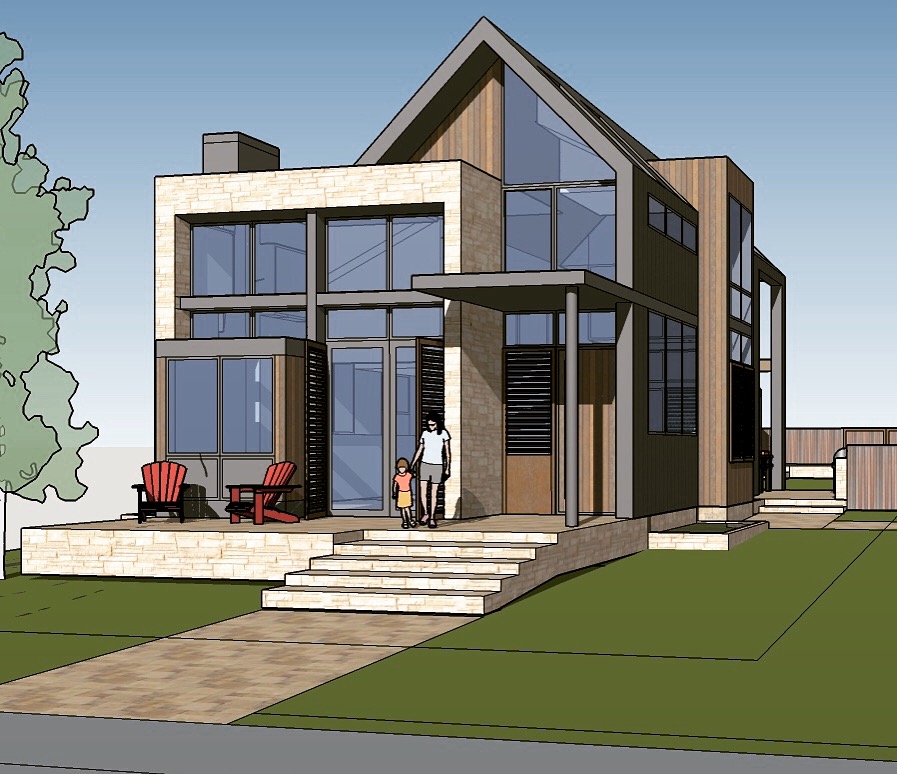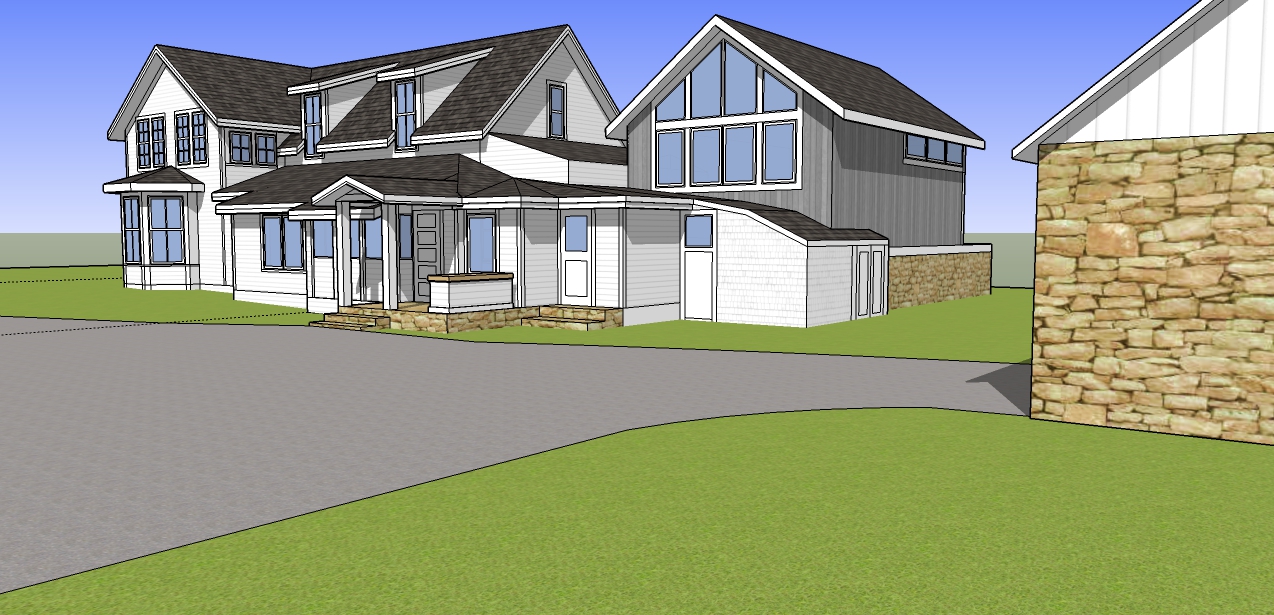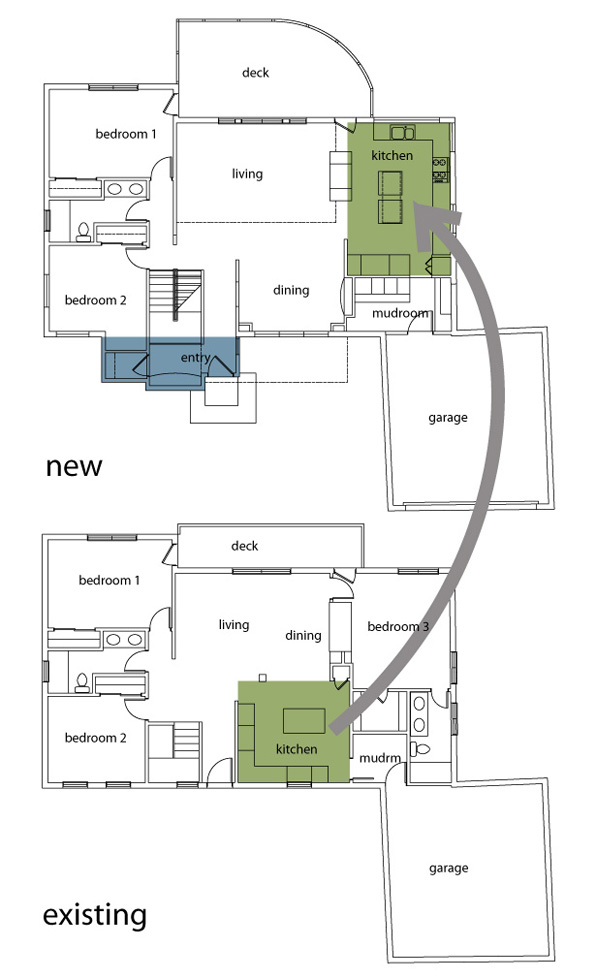We have a number of interesting projects in process right now - great clients, great sites.
The image above is for a new house for a young couple in the Newlands section of North Boulder. It sits on a challenging corner lot with significant zoning restrictions. The rear of the lot has great views of the Mt. Sanitas foothills and the new house is designed to take advantage of those views while still engaging the surrounding neighborhood.
One of the projects that we are working on intermittingly is the renovation and addition to a historic farmhouse in Boulder. The farmhouse consists of an original older section and a number of past additions, including a series of enclosed porches. We are studying the practicality of providing new foundations, stablizing existing conditions and bringing the historic farmhouse into the future.
The projects above and below are in early stages of Schematic Design, both extensive re-ordering of existing houses.
We are taking on a couple of new projects every quarter or so and as long as they all stay in their proper phases, that allows us to have 5-4 projects in construction simultaneously. That allows us to be on site every day on every project - absolutely critical to doing design/build at the level of quality and invention that we think makes is all worth while for ourselves and our clients.







